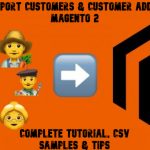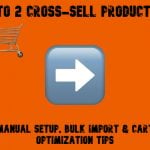Magento 2 Developer Guide & Cookbook: Essential Code Snippets, Tips, and User Notes
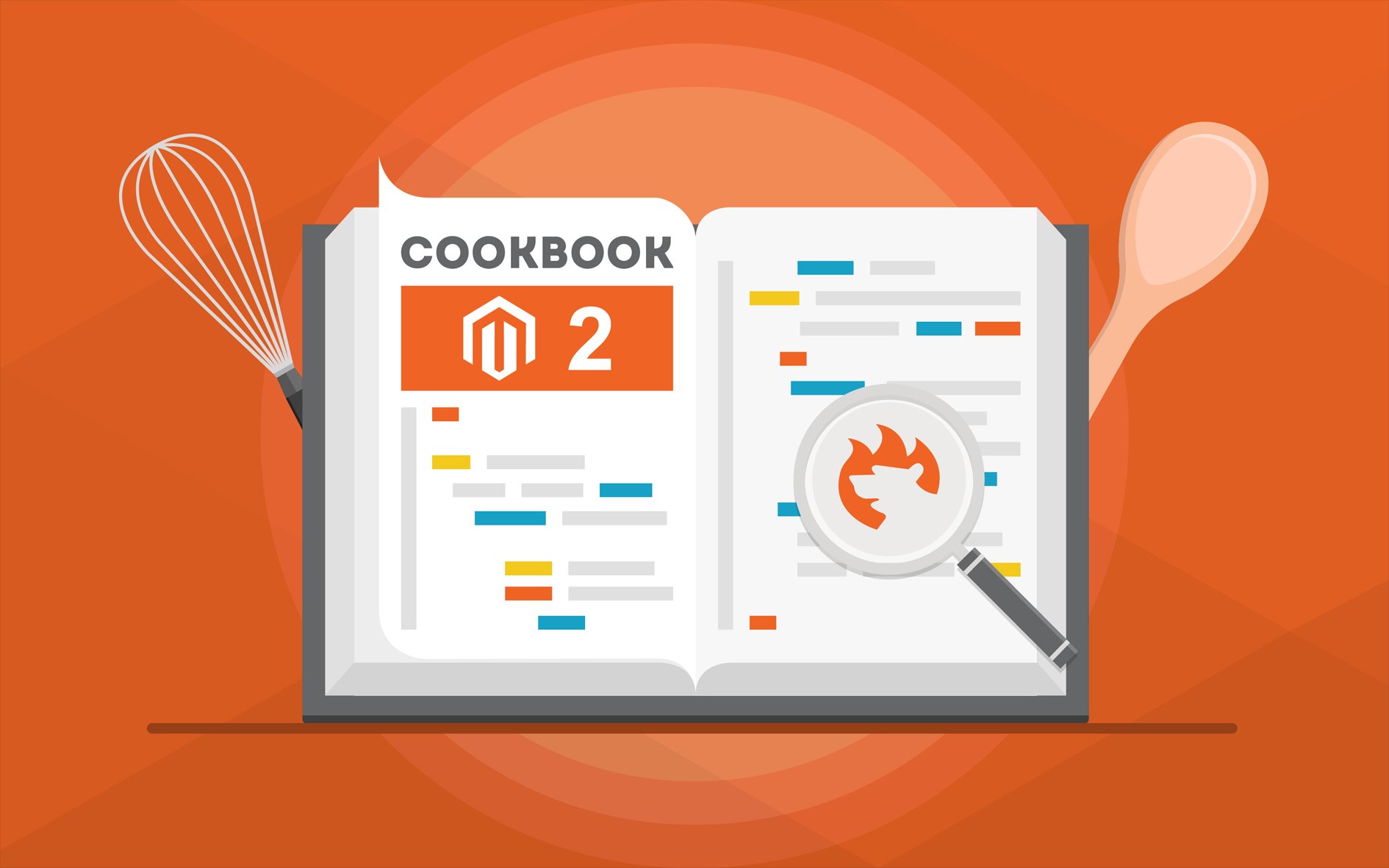
Working with Magento 2 often means juggling dozens of tasks — from managing catalogs to customizing checkout flows — and that’s where a reliable Magento guide becomes indispensable. While the official Magento user guide covers the basics for store admins, developers need a more practical resource with copy-and-paste solutions and proven tips. This Magento 2 developer guide and cookbook is designed to bridge that gap.
Inside, you’ll find essential Magento code snippets, workflow optimizations, and notes gathered from real projects. Whether you are looking for a quick fix for recurring issues or deeper insights into Magento development, this guide will save you hours of trial and error. More than just a list of tricks, it functions as both a Magento user and developer guide, helping you streamline your store, extend functionality, and reduce technical debt. If you’re searching for a clear Magento 2 guide that combines usability with developer-ready knowledge, this resource has you covered.

Table of contents
What Is This Magento Guide?
A Magento guide is more than just documentation — it’s a roadmap that helps both merchants and developers navigate one of the most powerful e-commerce platforms available today. For merchants, a Magento user guide explains everyday workflows like adding products, configuring taxes, or setting up promotions in plain language. For developers, a Magento guide often dives deeper, providing technical details, coding best practices, and tips on customizing the platform to meet unique business needs. Together, they form the knowledge base required to keep a Magento store running smoothly and growing sustainably.
Merchants rely on Magento user guides to handle store management without the need for custom code. These guides simplify routine but essential operations, such as importing product catalogs, exporting customer data, or syncing orders across multiple sales channels. Developers, on the other hand, use Magento developer guides to troubleshoot errors, extend default functionality, and implement complex integrations. The distinction lies in perspective: a user guide for Magento focuses on “how to configure,” while a developer guide focuses on “how to build.”
At Firebear Studio, we create step-by-step Magento user guides tailored to real-world challenges like imports, exports, and third-party system integrations. Each tutorial is designed to save time and reduce errors, giving store owners practical tools for scaling their business without technical bottlenecks. If you’re looking to master Magento 2 import and export processes, explore our complete Magento 2 Import & Export Guide List — a collection of detailed resources covering everything from product reviews to B2B entities. Below, we focus on a broader selection of topics.
Magento 2 Developer Guide & Cookbook: Essential Code Snippets, Tips, and User Notes
Magento can throw a wide range of technical challenges — from AJAX request bottlenecks and cron readiness errors to Redis misconfigurations and Elasticsearch index issues. To help you navigate them with confidence, we’ve compiled a selection of practical Magento 2 guides that address common performance pitfalls, installation hurdles, and system readiness problems. Each tutorial is designed to act as a step-by-step user guide for those who prefer to dig deeper into configurations and fixes.
Magento to Shopify Product Migration Guide

Migrating from Magento to Shopify requires careful planning, especially when transferring products, customers, and order history. This guide walks you through the complete product migration process, highlighting common pitfalls and offering best practices to ensure your catalog arrives intact. You’ll learn how to preserve SEO value, maintain clean data, and avoid downtime.
👉 Read the full Magento to Shopify Product Migration Guide for step-by-step instructions.
Magento vs Shopify: Products, Inventory, Orders, Marketing Compared
Choosing between Magento and Shopify can be a difficult decision. This article provides a detailed side-by-side comparison of how both platforms handle products, inventory management, orders, and marketing tools. Merchants will gain a clear picture of strengths and limitations to decide which solution fits their business model best.
👉 Explore the full comparison in Magento vs Shopify.
Magento SEO Checklist
SEO is a cornerstone of e-commerce growth, and Magento offers extensive optimization opportunities. This checklist compiles all essential steps — from URL structures and metadata setup to schema markup and performance tweaks — to help your Magento store rank higher.
👉 Follow the complete Magento SEO Checklist to boost your visibility.
Magento 2 Import
Importing data is at the heart of every Magento store. This guide explains how to import products, categories, customers, and other entities into Magento 2, covering both default tools and advanced solutions. You’ll discover how to streamline your data flows and prevent common errors during import.
👉 Master the process with the full Magento 2 Import Guide.
How to Associate Child Reviews to Configurable or Bundle Parent Products During Magento 2 Import
Reviews are vital for building customer trust, but importing them for configurable or bundle products can be tricky. This tutorial explains how to correctly link child reviews to parent products during Magento 2 imports, ensuring feedback is displayed in the right place.
👉 Learn the details in How to Associate Child Reviews During Magento 2 Import.
How to Import Product Images from FTP to Magento 2
For stores managing large catalogs, importing images directly from FTP saves significant time. This article explains how to set up FTP connections, structure your files correctly, and run Magento 2 imports without manual uploads.
👉 Follow the tutorial: How to Import Product Images from FTP to Magento 2.
How to Archive Files After Magento 2 Import
Archiving files after import keeps your store organized and prevents clutter in the server. This guide covers different ways to automatically archive Magento 2 import files, ensuring cleaner workflows and improved performance.
👉 Learn more in How to Archive Files After Magento 2 Import.
How to Import Products & Images Separately to Magento 2
Sometimes, importing products and images in one job leads to errors or inconsistencies. This article explains how to split imports into separate processes, ensuring smoother Magento 2 product and image synchronization.
👉 See step-by-step instructions in How to Import Products & Images Separately to Magento 2.
How to Update Customizable Product Options During Magento 2 Import
Customizable product options are essential for flexibility, but updating them at scale can be challenging. This guide shows how to import updated options into Magento 2 efficiently, saving time and minimizing mistakes.
👉 Explore details in How to Update Customizable Product Options During Magento 2 Import.
How to Generate Unique Product & Category URLs if They Are Duplicated During Magento 2 Import
Duplicate URLs can harm SEO and cause frontend conflicts. This tutorial explains how to generate unique product and category URLs during Magento 2 imports, ensuring both search engine friendliness and store stability.
👉 Read more in How to Generate Unique Product & Category URLs During Magento 2 Import.
How to Create New Product URLs After Import in Magento 2
When products are imported, URL keys often need updating to reflect new catalog structures. This guide walks through the process of automatically generating new product URLs after Magento 2 imports.
👉 Check the article: How to Create New Product URLs After Import in Magento 2.
How to Cache Imported Product Files in Magento 2
Large imports can slow down performance if not cached properly. This article explores how to cache imported product files in Magento 2 to optimize speed and reduce server load.
👉 Learn practical methods in How to Cache Imported Product Files in Magento 2.
How To Add Product Quantity To The Existing Value During Magento 2 Product Import

Instead of replacing stock quantities, sometimes you need to add values to existing numbers. This tutorial shows how to increment product quantities during Magento 2 imports without overwriting stock data.
👉 Full instructions here: How To Add Product Quantity To The Existing Value During Magento 2 Product Import.
How to Import Only Mapped Fields to Magento 2
Not every column in an import file is required. This article teaches how to configure imports so that only mapped fields are processed in Magento 2, streamlining workflows and reducing potential errors.
👉 See the details in How to Import Only Mapped Fields to Magento 2.
How to Resize Images after Import With Imagick (ImageMagick) for Magento 2
Managing image size is crucial for performance. This guide explains how to use Imagick (ImageMagick) to resize images after import in Magento 2, ensuring faster load times and better user experience.
👉 Learn how in How to Resize Images After Import With Imagick for Magento 2.
How to Remove Images From Magento 2 Directory After Import
Old or unused images can quickly pile up in your Magento 2 media directory. This tutorial explains how to safely remove redundant images after imports, keeping your store lightweight and storage-efficient.
👉 Read the full guide: How to Remove Images From Magento 2 Directory After Import.
How to Avoid Customer Address Duplication During Magento 2 Import
Duplicate customer addresses can cause serious data quality issues. This article shows how to configure Magento 2 imports to prevent duplication, ensuring cleaner records and a smoother customer experience.
👉 Learn the process in How to Avoid Customer Address Duplication During Magento 2 Import.
How to Export Order Addresses in One Line in Magento 2
Exporting addresses usually results in multiple rows, but sometimes a one-line format is required for integrations or reports. This tutorial teaches you how to export order addresses in one line from Magento 2.
👉 Check the tutorial here: How to Export Order Addresses in One Line in Magento 2.
How to Change Stock Status in Magento 2 Import When “is_in_stock” Is Missing
If the is_in_stock field is missing during imports, stock statuses may not display correctly. This article explains how to fix the issue by defining default values, ensuring accurate product availability in Magento 2.
👉 See the solution: How to Change Stock Status in Magento 2 Import.
How to Convert Kilograms to Grams During Magento 2 Product Import
Sometimes product weights are uploaded in kilograms when your store requires grams. This guide explains how to automate weight conversion during Magento 2 product imports, ensuring consistent catalog data.
👉 Learn more in How to Convert Kilograms to Grams During Magento 2 Product Import.
How to Export Simple Products With Their Parent Product Relations in Magento 2
Exporting simple products along with their parent configurable relationships helps maintain catalog integrity. This tutorial details how to include both product types in a single export file in Magento 2.
👉 Explore the article: How to Export Simple Products With Their Parent Product Relations in Magento 2.
How to Import Base Images to Magento 2 as Small & Thumbnail Images
Sometimes base images also need to be reused as small and thumbnail images. This article explains how to configure imports so that one image is applied across multiple size roles in Magento 2.
👉 Read the instructions: How to Import Base Images to Magento 2 as Small & Thumbnail Images.
How to Import Customer Addresses to Magento 2 Without Data Duplication
Managing customer addresses during migration can lead to duplicates if handled incorrectly. This guide shows how to import customer addresses to Magento 2 while preventing duplication and maintaining clean records.
👉 See the full guide: How to Import Customer Addresses to Magento 2 Without Data Duplication.
The Extensive Guide to Magento 2 Troubleshooting
Magento 2 can throw a wide variety of errors, from installation issues to performance bottlenecks. This extensive guide compiles troubleshooting techniques to help developers and merchants diagnose and fix common problems.
👉 Dive into the Extensive Guide to Magento 2 Troubleshooting.
Everything about Magento 2 on Firebear
If you’re looking for a central hub of Magento 2 resources, this is it. The article compiles everything Firebear has published on Magento 2, from import/export guides to developer tutorials and extension manuals.
👉 Browse the collection: Everything about Magento 2 on Firebear.
How to Import Products to Magento 2 & Remove Their Upsell Products
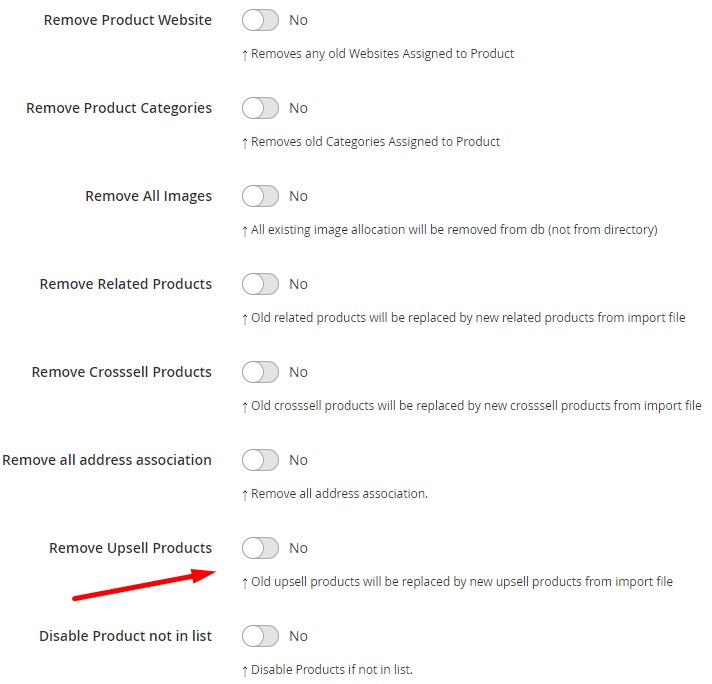
Sometimes merchants need to clear upsell associations when importing products. This article explains how to remove existing upsell links directly during Magento 2 product imports, saving time and avoiding manual edits.
👉 Learn the steps in How to Import Products to Magento 2 & Remove Their Upsell Products.
How to Import Products to Magento 2 & Remove Their Cross-Sells
Cross-sell products help with cart-level promotions, but in certain cases, merchants want to clear old associations. This guide shows how to remove cross-sell links during Magento 2 imports for a cleaner catalog.
👉 Read the tutorial: How to Import Products to Magento 2 & Remove Their Cross-Sells.
How to Import Products to Magento 2 & Remove Their Related Products
Old related product associations can confuse customers and harm catalog performance. This article covers how to strip related product links during Magento 2 imports to maintain accurate recommendations.
👉 See more in How to Import Products to Magento 2 & Remove Their Related Products.
How to Import Products to Magento 2 & Remove Their Existing Images From The Database
Sometimes product images must be refreshed completely. This guide explains how to remove existing images from the Magento 2 database during imports, ensuring only new visuals are displayed.
👉 Follow the instructions in How to Import Products to Magento 2 & Remove Their Existing Images From The Database.
How to Import Products to Magento 2 & Remove Associated Product Categories
When restructuring catalogs, product-category associations may need to be cleared. This article teaches how to remove category links during product imports in Magento 2.
👉 Learn more: How to Import Products to Magento 2 & Remove Associated Product Categories.
How to Import Products to Magento 2 & Remove Associated Product Store Views
If products are tied to multiple store views incorrectly, they can display inconsistently. This tutorial shows how to remove store view assignments during Magento 2 imports.
👉 See the process in How to Import Products to Magento 2 & Remove Associated Product Store Views.
How to Import Products to Magento 2 & Remove Product Associations
In some cases, you may need to clear all associations tied to products, from cross-sells to categories. This article covers how to remove product associations during Magento 2 imports in bulk.
👉 Read the tutorial: How to Import Products to Magento 2 & Remove Product Associations.
How to Clear Attribute Values via Magento 2 Product Import
Sometimes merchants need to reset product attributes instead of updating them. This guide explains how to clear attribute values during Magento 2 imports, restoring products to a clean state.
👉 Full instructions: How to Clear Attribute Values via Magento 2 Product Import.
How to Import 100,000 Products to Magento 2 in Less Than an Hour
Handling massive catalogs is a challenge for any merchant. This article demonstrates how to import 100,000 products into Magento 2 in under an hour using optimized workflows and the right tools.
👉 Learn the method in How to Import 100,000 Products to Magento 2 in Less Than an Hour.
How to Import CSV Files From /var/import/ Folder to Magento 2 Automatically
Automation saves countless hours when handling imports. This tutorial explains how to configure Magento 2 to automatically pull CSV files from the /var/import/ folder and process them without manual triggers.
👉 Discover the setup: How to Import CSV Files From /var/import/ Folder to Magento 2 Automatically.
How to Import Default Attribute Values for Products via API in Magento 2
APIs allow you to automate workflows and eliminate manual updates. This guide explains how to import default attribute values for products via API in Magento 2, streamlining catalog management and ensuring consistency across entities.
👉 Read the full tutorial: How to Import Default Attribute Values for Products via API in Magento 2.
How to Create Redirects From Old URL Keys to New Ones via Magento 2 Import
Maintaining SEO value after catalog updates often requires redirects. This article shows how to create redirects from old URL keys to new ones directly during Magento 2 imports, preventing broken links and traffic loss.
👉 Learn how in How to Create Redirects From Old URL Keys to New Ones via Magento 2 Import.
How to Import & Export Magento 2 Categories With Custom Separators
Sometimes product data includes unique separators that don’t match Magento defaults. This tutorial explains how to import and export categories in Magento 2 using custom separators, making complex files compatible with your store.
👉 See the details: How to Import & Export Magento 2 Categories With Custom Separators.
How to Disable Products Not Available in an Import File for Specific Magento 2 Websites
Managing stock across multiple websites requires precision. This article shows how to automatically disable products that are missing in an import file for specific Magento 2 websites, ensuring catalog accuracy.
👉 Read more in How to Disable Products Not Available in an Import File for Specific Magento 2 Websites.
How to Send CC & BCC Email Notifications for Magento 2 Import & Export
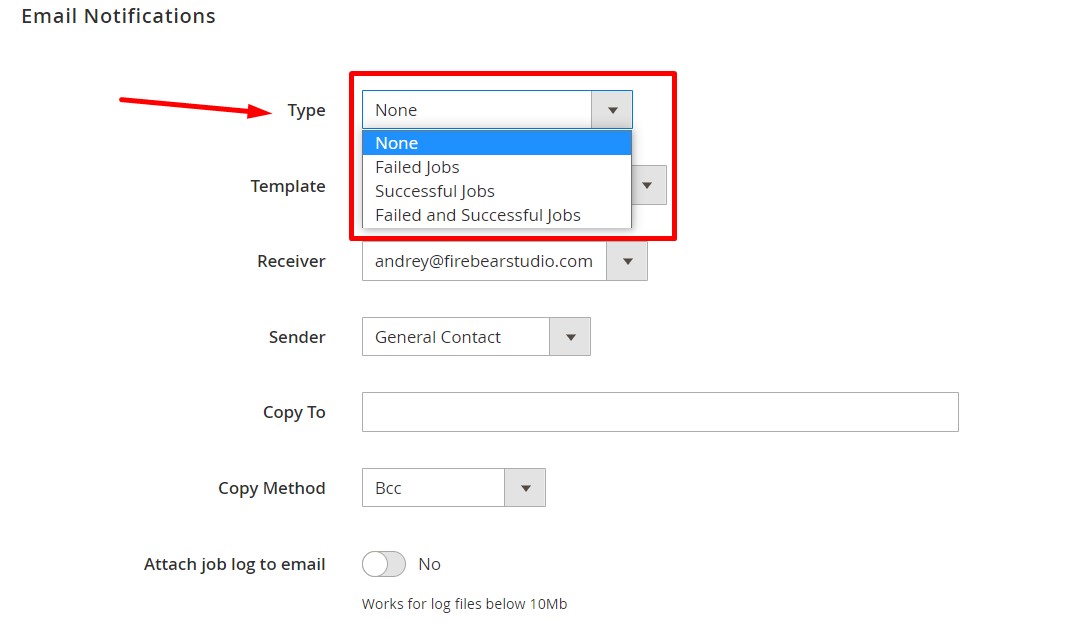
Email notifications keep teams updated on import/export jobs. This guide covers how to configure CC and BCC notifications in Magento 2, helping multiple stakeholders stay informed on data operations.
👉 Full guide here: How to Send CC & BCC Email Notifications for Magento 2 Import & Export.
How to Import and Export Attribute Sets With Multiple Values in Magento 2
Attribute sets help structure catalogs, but handling multiple values at scale can be tricky. This article explains how to import and export attribute sets with multiple values in Magento 2 for efficient catalog management.
👉 Check the tutorial: How to Import and Export Attribute Sets With Multiple Values in Magento 2.
How to Update Bundle Product Options Using Magento 2 Import
Bundle products are powerful but complex. This guide shows how to update bundle product options during imports in Magento 2, reducing manual effort and keeping product data consistent.
👉 Learn more: How to Update Bundle Product Options Using Magento 2 Import.
How to Import Products to Magento 2 and Set Their Status to Out of Stock Automatically
Automating stock statuses can prevent overselling. This article explains how to configure imports so that products are automatically set to “Out of Stock” when conditions require it.
👉 See the steps: How to Import Products to Magento 2 and Set Their Status to Out of Stock Automatically.
How to Import Nested XML Files to Magento 2
Not all data comes in flat CSV format. This tutorial covers how to import nested XML files into Magento 2, handling complex hierarchical structures with ease.
👉 Explore the article: How to Import Nested XML Files to Magento 2.
How to Import Nested JSON Files to Magento 2
For stores that rely on APIs and JSON feeds, nested JSON imports are a must. This guide shows how to import nested JSON files to Magento 2, making it easier to integrate modern data sources.
👉 Read the full tutorial: How to Import Nested JSON Files to Magento 2.
How to Import Unique Custom Option Titles for Specific Store Views in Magento 2
For multilingual or multi-store setups, custom option titles often need to differ per store view. This article shows how to import unique titles for each store view in Magento 2, ensuring accurate localization and customer experience.
👉 Learn more in How to Import Unique Custom Option Titles for Specific Store Views in Magento 2.
How to Import Customers to Magento 2 and Assign Them to a Customer Group
Segmenting customers by groups is vital for pricing, promotions, and personalization. This tutorial explains how to import customers into Magento 2 and automatically assign them to the correct customer group.
👉 Read the full guide: How to Import Customers to Magento 2 and Assign Them to a Customer Group.
How to Generate Order Increment IDs Automatically During Magento 2 Import
Unique order IDs are critical for tracking and reporting. This article covers how to generate order increment IDs automatically during Magento 2 imports, ensuring clean and consistent order data.
👉 Explore the process: How to Generate Order Increment IDs Automatically During Magento 2 Import.
How to Update Products That Are Not Listed in a Product Table During Magento 2 Import
Sometimes you need to handle products missing from your import files. This tutorial shows how to update products not listed in the table during Magento 2 imports, keeping your catalog accurate without overwriting valuable data.
👉 Learn the method: How to Update Products Not Listed in a Product Table During Magento 2 Import.
How to Use External Image URLs in Magento 2 Import
When working with large catalogs or third-party image sources, uploading files isn’t always practical. This article explains how to import product images into Magento 2 using external image URLs.
👉 Full instructions: How to Use External Image URLs in Magento 2 Import.
How to Fix “The Source File Moving Process Failed” Error in Magento 2
This common error occurs when Magento cannot move imported files into the correct directory. The guide provides troubleshooting steps to identify root causes and ensure smooth imports.
👉 Check the solution: How to Fix “The Source File Moving Process Failed” Error in Magento 2.
How to Import Product Images in Magento 2 When They Already Exist in pub/media
Sometimes re-importing images causes conflicts with existing files. This article teaches how to handle image imports when files already exist in the pub/media directory, avoiding duplication and errors.
👉 Learn more: How to Import Product Images in Magento 2 When They Already Exist in pub/media.
How to Export Page Builder Pages or Templates in Magento 2
Magento Page Builder is widely used for creating custom layouts. This guide shows how to export Page Builder pages and templates in Magento 2 for backups, migration, or reuse across stores.
👉 Read the tutorial: How to Export Page Builder Pages or Templates in Magento 2.
How to Add ‘Delete Confirmation Popup’ in Magento 2 for Default Import Functionality
Accidentally deleting import data can be costly. This article demonstrates how to add a delete confirmation popup to Magento 2’s default import functionality, reducing the risk of errors.
👉 See details: How to Add ‘Delete Confirmation Popup’ in Magento 2 for Default Import Functionality.
How to Update Order Status via CSV in Magento 2
Updating order statuses in bulk saves time for busy stores. This tutorial covers how to use CSV files to update Magento 2 order statuses quickly and reliably.
👉 Explore the steps: How to Update Order Status via CSV in Magento 2.
How to export specific data sets for a particular entity in Magento 2
Targeted exports are essential for analytics, integrations, and audits. This guide shows how to export only the fields you need for a given entity in Magento 2, reducing file size and processing time while keeping data clean.
👉 Get the steps: How to export specific data sets for a particular entity in Magento 2.
How to export data from Magento 2 in XLS & XLSX formats
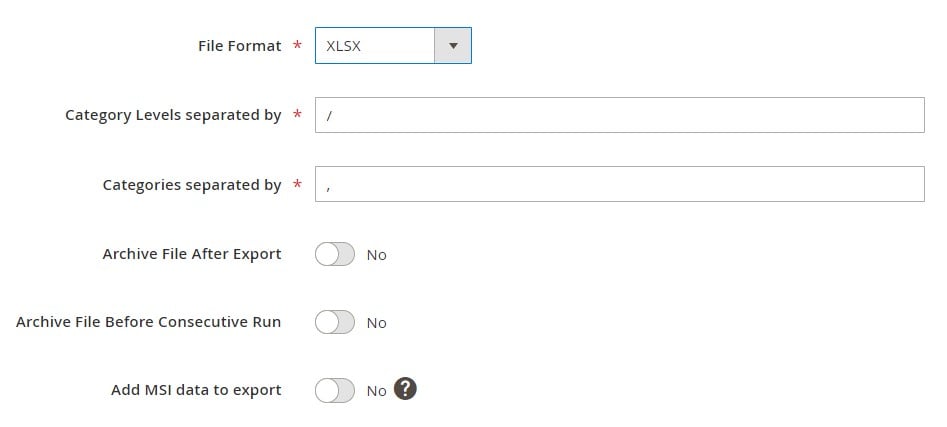
Many teams rely on spreadsheets for review and reporting. This article explains how to export Magento 2 data to XLS/XLSX, improving compatibility with BI tools and collaborative workflows.
👉 Follow the tutorial: How to export data from Magento 2 in XLS & XLSX formats.
How to export a custom entity from Magento 2
When default entities aren’t enough, custom entities save the day. Learn how to set up and export a custom entity in Magento 2 so your integrations and internal processes stay aligned.
👉 Read more: How to export a custom entity from Magento 2.
How to export customers with custom attributes in Magento 2
Customer attributes power segmentation and personalization. This guide shows how to include custom attributes in customer exports from Magento 2, ensuring downstream systems receive complete profiles.
👉 See how: How to export customers with custom attributes in Magento 2.
How to export custom SKU column from Magento 2 with all content
Complex catalogs often require SKU variants or custom SKU columns. This article explains how to export a custom SKU column with full content intact for clean, reliable product data.
👉 Learn the method: How to export custom SKU column from Magento 2 with all content.
How to fix store ID-related issues on Magento 2 import
Mismatched store IDs can break imports and distort storefront data. This tutorial covers the common pitfalls and shows how to map store IDs correctly during Magento 2 imports.
👉 Get the fix: How to fix store ID-related issues on Magento 2 import.
How to fix the “URL key for specified store already exists” issue on Magento 2 import
Duplicate URL keys can cause conflicts and failed imports. This guide walks through resolving the “URL key for specified store already exists” error and preventing it in the future.
👉 Solve it here: How to fix the “URL key for specified store already exists” issue on Magento 2 import.
How to Troubleshoot Upgrade Issues in Magento 2
Upgrades can expose dependency conflicts, cache problems, or PHP mismatches. This resource compiles proven steps to diagnose and resolve Magento 2 upgrade issues safely.
👉 Troubleshoot with: How to Troubleshoot Upgrade Issues in Magento 2.
The End of The Hosted Server Epoch: How to Run Magento 2.4 That Requires PHP 7.4 and Elasticsearch
Magento 2.4’s stack requirements changed deployment strategies. This article explains practical approaches for running Magento 2.4 with PHP 7.4 and Elasticsearch, including hosting considerations.
👉 Read the guide: How to Run Magento 2.4 with PHP 7.4 and Elasticsearch.
Magento 2 Cannot Import Product Images: Reasons & Resolutions
Image import failures are common but solvable. This piece catalogs typical causes—permissions, paths, timeouts—and provides actionable resolutions to get Magento 2 image imports flowing again.
👉 Fix your imports: Magento 2 Cannot Import Product Images: Reasons & Resolutions.
How to Address Backup Issues in Magento 2
Backups can fail for many reasons—file permissions, disk quotas, locked tables, or misconfigured cron. This article walks you through verifying backup configuration, checking logs, running CLI routines for DB/files/media, and setting a sane retention policy so you can restore with confidence when it matters most — Fix Magento 2 backup issues.
How to fix “Updater application is not available” issue in Magento 2
If Magento reports that the Updater application isn’t available, deployments, upgrades, and module installs grind to a halt. This guide explains why it happens (missing update/ files, wrong permissions, Composer/Web Setup Wizard quirks) and shows reliable Composer-first fixes to get you unstuck — Resolve “Updater application is not available” in Magento 2.
How to Fix Webpack That Hangs Before Compilation (PWA Studio Issue)
PWA Studio projects sometimes hang before compilation due to Node compatibility, watchers, memory limits, or broken configs. The article provides a practical checklist: clear caches, verify env vars, adjust memory, and align package versions to get Webpack compiling again — Fix Webpack hangs in PWA Studio.
How to Improve Magento 2 Performance Issues Caused by Non-cacheable Pages
Non-cacheable (ESI/private) blocks can sabotage page speed. This tutorial shows how to identify non-cacheable fragments, convert them when possible, and minimize dynamic rendering to reclaim full-page cache wins and faster TTFB — Optimize non‑cacheable pages in Magento 2.
How to optimize private content blocks in Magento 2 for better performance
Private content (customer-data) requests can flood your storefront with AJAX calls. Learn how to audit sections, batch or defer updates, trim payloads, and reduce network chatter to improve UX and Core Web Vitals — Optimize private content blocks.
How to Fix Invalidated Cache Performance (Response Time) Degradation in Magento 2
Frequent cache invalidations spike response times and CPU. This guide helps you pinpoint the culprits (events, observers, tagging), tune cache TTLs, and reduce unnecessary purges to keep pages hot and snappy — Fix Magento 2 performance degradation from invalidated cache.
How to Troubleshoot Product Recommendations Module in Magento 2
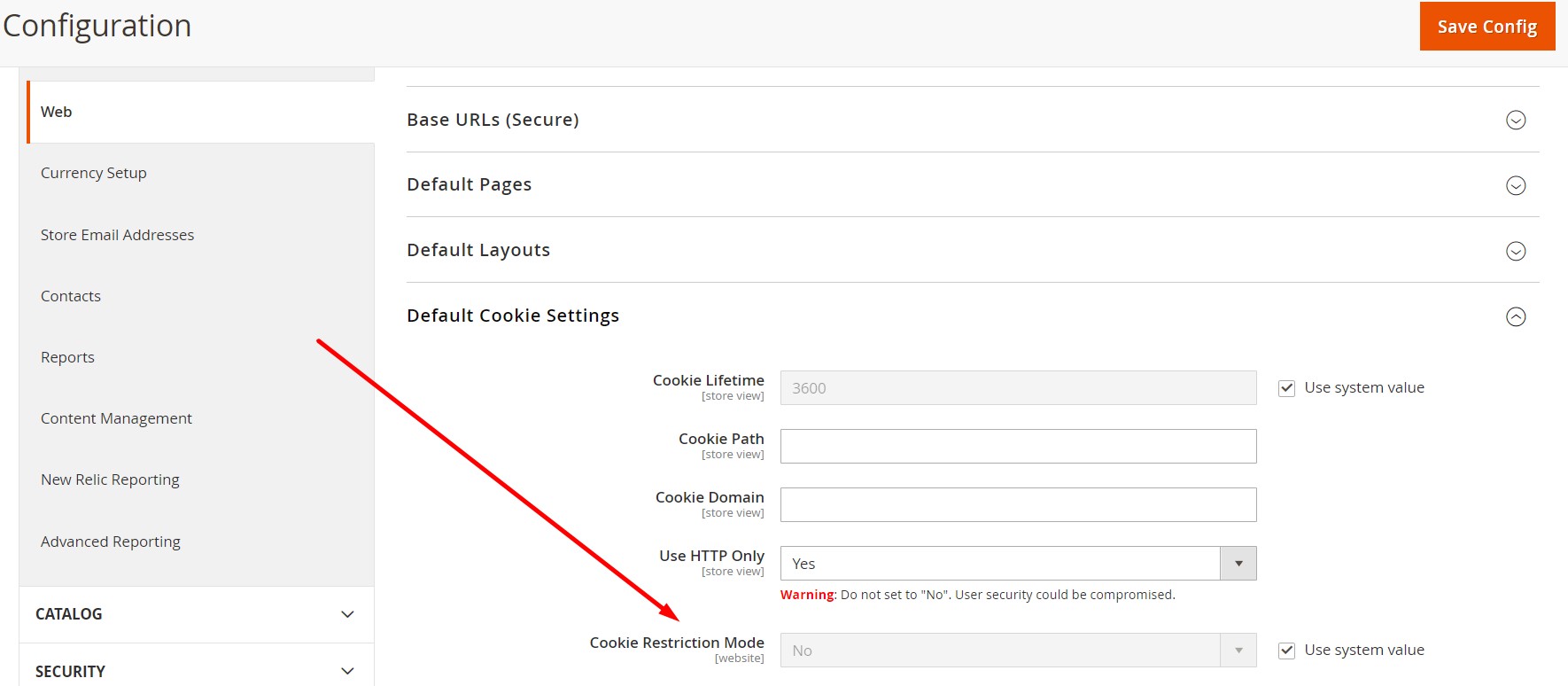
When recommendations misbehave—no data, bad placements, or tracking glitches—this article shows how to validate feeds, events, and storefront widgets, plus roll out safe diagnostics to restore personalized merchandising — Troubleshoot Magento 2 Product Recommendations.
How to Fix & Improve Order Export to Magento Order Management in Magento 2
Order exports to Magento Order Management/OMS can fail due to mapping, API auth, or payload constraints. This guide covers field alignment, retries, and export scheduling so finance and fulfillment flows stay reliable — Improve Magento 2 order export to MOM/OMS.
The Ultimate Magento 2 REST API Guide
A comprehensive, hands-on reference to Magento 2 REST: authentication (token/integration), key endpoints, payload patterns, pagination, filters, and best practices for stable integrations and testable workflows — Read the Magento 2 REST API guide.
Magento 2 Integrity Constraint Violation Issues & Solutions
Foreign keys, unique indexes, and duplicates can torpedo imports or upgrades. This article shows how to read SQLSTATE errors, repair relationships, de-duplicate data, and keep your schema healthy — Solve Magento 2 integrity constraint violations.
How to decrease throughput AJAX requests in Magento 2 to improve performance
Excessive AJAX requests can slow down storefronts and overload servers. This article shows how to analyze request patterns, consolidate calls, and optimize caching to reduce throughput while keeping dynamic content intact — Reduce AJAX requests in Magento 2.
How to set indexers to Update On Schedule mode in Magento 2
Running indexers in real time can consume resources and delay operations. This guide explains how to configure Magento 2 indexers in “Update On Schedule” mode for balanced performance and accuracy — Set indexers to Update On Schedule in Magento 2.
How to fix Redis in Magento 2
Redis powers Magento 2 caching and sessions, but misconfigurations cause errors or performance bottlenecks. This tutorial helps diagnose issues, reset connections, and fine-tune Redis for reliable store speed — Fix Redis in Magento 2.
How to load a Magento 2 website if maintenance mode is left enabled (Service Temporarily Unavailable error)
Leaving maintenance mode on makes a site inaccessible. This article shows how to disable it safely, restore storefront access, and prevent the “Service Temporarily Unavailable” error — Resolve maintenance mode error in Magento 2.
How to restore green Elasticsearch Index Status in Magento 2
If Elasticsearch shows a yellow or red index status, Magento 2 searches may degrade. The article walks through restoring a healthy green index status for stable search functionality — Restore green Elasticsearch index status in Magento 2.
How to fix cron readiness check issues in Magento 2
Magento 2 setup and upgrades rely on cron jobs. This guide explains why readiness checks fail and how to fix cron scheduling, permissions, and environment settings — Fix cron readiness check issues in Magento 2.
How to fix file permissions readiness check issues in Magento 2
File permission errors can block installations and upgrades. This article outlines the correct permissions and ownership setup to pass readiness checks without security risks — Fix file permissions issues in Magento 2.
How to fix PHP version readiness check issues in Magento 2
PHP version mismatches often stall upgrades or fresh installs. This tutorial shows how to check compatibility and configure Magento 2 for the correct PHP version — Fix PHP version readiness issues in Magento 2.
How to fix conflicting component dependencies issues in Magento 2
Conflicting dependencies occur when extensions or modules rely on mismatched versions. This article explains how to resolve dependency conflicts and restore smooth Magento 2 operations — Fix conflicting component dependencies in Magento 2.
How to fix errors installing optional sample data in Magento 2
Installing sample data may fail due to Composer, memory limits, or database locks. This guide helps you troubleshoot and fix sample data installation errors quickly — Fix Magento 2 sample data installation errors.
How to fix xdebug maximum function nesting level error during Magento 2 installation
During installation, Xdebug may trigger a maximum nesting level error. The tutorial shows how to raise limits or disable Xdebug to complete setup smoothly — Fix Xdebug nesting level error in Magento 2.
Other Miscellaneous Magento 2 Guides from Our Blog
These miscellaneous Magento guides provide additional practical tips, hidden tricks, and solutions to everyday challenges you may encounter while running or customizing your store:
- How to fix xdebug maximum function nesting level error during Magento 2 installation
- How to install Magento 2 if install.log cannot be created
- How to solve the Unknown module error during the Magento 2 installation
- How to fix failed Magento 2 download caused by changes in Composer
- How to fix Exception SessionHandler during Magento 2 installation
- How to fix ReflectionException error during Magento 2 installation
- How to fix fatal PDO error during the Magento 2 installation
- How to install Magento 2 using nginx
- How to install Magento 2 if installation stops
- How to log in to the Magento 2 admin if the requested URL was not found
- How to clone the Magento 2 GitHub repository and meet installation dependencies
- How to open your store when Magento 2 is not accessible in a browser
- How to add a custom import adapter in Magento 2
- How to fix the inability to write to the generated/code directory in Magento 2
- How to Fix Exceptions During Magento 2 Installation
- How to Export Products from Magento 2 via CLI
- How to Import Multiselect Attribute Values to Magento 2
- How to Import Disabled Products to Magento 2
- How to Read a CSV File & Convert It into an Array in Magento 2
- How To Import Customer Passwords To Magento 2
- How to Import Attribute Values with Commas to Magento 2
- How to create a custom import in Magento 2
- How to Import Products with Custom Attributes to Magento 2
- How to Import Configurable Product with Multiple Configurable Options to Magento 2
- How to Import Custom CSV to Custom Table in Magento 2
- How to Import Database in Magento 2
- How to write and get config values by scope in Magento 2
- How to get current quote in Magento 2
- How to fix Magento 2 item with the same ID already exists error
- How to solve Magento 2 var/generation cannot be deleted problem
- How to get default billing and shipping address by customer in Magento 2
- How to display success and error messages in Magento 2
- How to get option label from dropdown in Magento 2
- How to get a product by ID in Magento 2
- How to get all attributes of a product in Magento 2
- How to get simple products of configurable product in Magento 2
- How to Add Magento 2 System Configuration Fields & Get Core Config Data Programmatically
- How to Regenerate URL Rewrites in Magento 2
- How to Import & Export WADL Data to/from Magento 2
- How to Import & Export WSDL Data to/from Magento 2
- How to fix Magento 2 500 internal server error
- How to fix Error 503 (Service Temporary Unavailable) in Magento 2
- How to repair Magento 2 database
- How to debug and log Magento 2 import and export process and errors
- How to Export Products, Orders, Customers, & Other Magento 2 Entities to Remote FTP & SFTP Server
- Invalid Option Value: How To Fix Magento 2 Import Error
- Imported Resource (Image) Could Not Be Downloaded: How To Fix Error During Magento 2 Import
- Magento 2 Import: How To Fix ‘Value For Attribute Contains Incorrect Value’ Error
- Value For Status Attribute Contains Incorrect Value: How To Fix Error During Magento 2 Import
- General System Exception Happened: How To Fix Error During Magento 2 Import
- How to Create Magento 2 Progress Bar For Files Import
- How to Import Individual Product Data for Each Store View in Magento 2?
- How to Run Product Import in Magento 2 from CLI
- How to Import Products with ™ & ® Symbols in Magento 2
- Magento 2 Import Error
- How to Import Related Products to Magento 2
- State of the Art in Magento 2 Product Imports
- Admin URL Is not Working in Magento 2
- How to Add Non-Category Link to Navigation Links in Magento 2
- How to Create Child Theme in Magento 2
- Magento 2 setup:upgrade & Other Commands
- Magento 2 CSS and JavaScript Files Are Not Loading
- Magento 2 Deprecated Save & Load Methods In Abstract Model
- How To Add Fees To Order Totals In Magento 2
- How to Override Core Block, Model & Controller in Magento 2
- How to Bootstrap Magento 2 in test.php Script
- 404 Error for Scripts and CSS in Magento 2
- Magento 2 ObjectManager Use Cases
- Magento 2 File/Folder Permissions
- How To Import Customers & Customer Addresses To Magento 2
- How To Import And Export Tax Rates In Magento 2
- How to import XML to Magento 2
- How to Import CSV to Magento 2 via SSH
- Magento 2 Magmi Integration
- How to Import Product Images into Magento 2 in Bulk
- How to Represent Multiple Option Attribute for Magento 2 CSV Product Import
- How to Configure Import CSV File Size in Magento 2
- How To Import/Export Categories Between Magento 2 Websites
- How to Make Custom CSV Mapping in Magento 2
- How to Run Product Import on Daily basis in Magento 2
- Magento 2 UI Grid Component
- How do disable caching of custom block on a Magento 2 product view page?
- Pros and cons of using plugins vs observers in Magento 2
- Magento 1.9 upgrade to Magento 2 via admin panel or Magento Connect
- How to add bootstrap.js in Magento 2?
- How to move Magento 2 root URL to another domain
- How to make JavaScript strings translatable (localizable) in Magento 2
- Main frontend menu generation in Magento 2
- How is a price rendered on a frontend product view page in Magento 2?
- How to get a store in Magento 2 programmatically?
- How to return a JSON response from a controller in Magento 2
- How to get base directory programmatically in Magento 2
- Loading categories by their IDs in Magento 2
- What are JavaScript validators in Magento 2?
- Loading subcategories for a category in Magento 2
- Adding custom attribute to customers for Magento 2 extensions
- How to create customer groups programmatically in Magento 2
- system.xml saved config validation in Magento 2
- How to modify CSS files in Magento 2
- How to remove the Create Order button from customer admin form in Magento 2
- How to reset lost admin password in Magento 2
- How to add custom block for shipping methods in onepage checkout in Magento 2
- How to get Customer in product view in Magento 2
- How to add arbitrary HTML to <head> of every page in Magento 2
- What does Magento 2 @escapeNotVerified mean?
- How to retrieve product information in Magento 2
- How to write files programmatically in Magento 2
- How to create custom helper in Magento 2
- How to set up custom response HTTP header from a controller in Magento 2
- How to add new parameters to core model in Magento 2
- How to get product collection in custom template block in Magento 2
- How to extend layout from vendor folder in Magento 2
- How to use Mage::log method in Magento 2
- How to add date field in admin in Magento 2
- How to extend JavaScript class/method of checkout model class in Magento 2
- How to override email HTML files in Magento 2
- How to create Magento 2 custom collection query
- How to get most viewed products and bestsellers on homepage in Magento 2
- How to create beautiful image upload in configuration of Magento 2
- How to check if customer is logged into Magento 2
- How to load Model function in block in Magento 2 when overriding or extending a core block
- How to add Google Fonts in Magento 2
- How I to change default font Icon in menu admin for a custom module in Magento 2?
- How to create a language package for Magento 2?
- How to get a page url from a *.phtml template in Magento 2?
- How to adjust Apache web server to run Magento in a subdirectory
- Where are third-party modules situated in Magento 2?
- How to use the new repo.mangento.com
- How to set up a form popup-modal in Magento 2
- An extension’s custom initialization on Magento start
- «There are no commands defined» failure
- How to create an extension dropdown config option in Magento 2
- How to create Magento 2 custom system configuration and controller
- How to include a phtml file in Magento 2
- How to get current store DateTime in Magento 2
- Permission Denied htaccess in folders without htaccess files
- Magento 2 registration.php file in extension folder
- How to add a child block in Magento 2
- Magento 2 Shortcut for performing command line tasks on Windows
- How to overwrite a template via module in Magento 2
- How to load a JavaScript file of a custom module in Magento 2
- How to create a custom backend form processing before submission and validation in Magento 2
- Magento 2 virtualType
- How to get the media folder URL programmatically in Magento 2
- How to program the media browser in Magento 2
- How to catch the admin tab switching event in Magento 2
- How to create a popup (modal) window on button click in Magento 2 admin
- Error while overriding block via preference in Magento 2
- How to add custom Javascript in head in Magento 2
- How to render an image in Magento 2 Adminhtml grids
- How to get Magento 2 events/observers
- How to create Admin Grid in Magento 2
- How to include the name of a module in Magento 2
- How to check programmatically if you are in the admin panel in Magento 2
- How can extensions show / hide blocks conditionally in Magento 2
- How to make extension to perform custom initialization on a Magento 2 start
- How to use controller to redirect customers to another URL in Magento 2
- Database schema upgrade
- How to get access to working directories in Magento 2
- How to get the default core write and read resources in Magento 2
- How to get a base url in Magento 2
- How to Generate constructors in Magento 2
- What should I do if Magento 2 grunt exec does not create symlinks
- How Can I move a search bar in Navigation div in Magento 2 via XML?
- How to convert a number format into a currency format in Magento 2
- Adding a custom block to specific product type view pages
- How to override a base view file
- How to call theme images from a static block
- How to programmatically create a configurable Magento 2 product
- Mage::Registry in Magento 2
- magento2-composer-bundled
- How to re-generate Magento 2 code in var/generation
- How to enable Template path hints and display block names in Magento 2
- How to defer JavaScript execution in Magento 2
- How to change a template for a standard block
- How to replace LESS CSS Preprocessor with SASS or another one
- How to get POST and GET requests in Magento 2
- How to clean LESS/CSS Theme cache in Magento 2
- Magento 2 Request Flow
- How to remove block from a Magento 2 layout
- How to set Magento 2 modes (production, development)
- Adding a new product type in Magento 2
- Writing a message to a system log in Magento 2
- How to setup cron in Magento 2
- Flushing the Magento 2 Cache Storage
- Adding custom CSS/JS to your Magento 2 modules
- How to check if a Magento 2 module has been successfully installed
- How to create a Magento 2 playground test file with an initialised Magento 2 application
- How to enable profiler in Magento 2
- How to start Developer Mode in Magento 2
- How to get the сollection of custom Magento 2 modules
- How to instantiate a model in Magento 2
- How to instantiate a custom block in Magento 2
- How to display exceptions on a page in Magento 2
Final Words: How Firebear Simplifies Use Cases Described in This Magento Guide
No matter what Magento user guide you follow, sooner or later you’ll face the same challenge — managing data at scale. A good Magento 2 guide often explains how to handle product catalogs, customer records, or orders, but when it comes to bulk imports and exports, the native platform quickly shows its limits. Firebear extensions fill this gap, providing solutions that work equally well for merchants and developers.
The Improved Import & Export extension is a prime example. For everyday users, it simplifies Magento import/export processes into a guided, step-by-step workflow. Admins can map attributes visually, schedule recurring jobs, and connect Magento 2 with external systems like Google Sheets or Dropbox — all without writing a line of code. For developers, the same tool unlocks deeper functionality with API integrations, cron automation, and advanced data mapping. It works as a bridge between the practical advice found in a Magento user guide and the technical insights of a Magento developer guide.
The Improved Configurable Product extension follows the same philosophy. Configurable products are notoriously tricky in Magento, but this tool streamlines setup for store managers while maintaining flexibility for developers customizing product structures. Together, these solutions extend the lessons of any Magento 2 guide, making it easier to apply them in real storefronts.
📩 Have questions about setup or integration? Contact the Firebear team for expert guidance.
Frequently Asked Questions About Magento Guides
What is a Magento guide and why do I need one?
A Magento guide is a structured resource that explains how to configure, customize, or troubleshoot your store. It helps both merchants and developers work more efficiently.
What is the difference between a Magento user guide and a Magento developer guide?
A Magento user guide focuses on everyday store operations like imports, exports, and catalog management, while a Magento developer guide covers advanced tasks such as coding, API integrations, and performance tuning.
Where can I find the official Magento 2 user guide?
Adobe provides an official Magento 2 user guide, but you can also find step-by-step community tutorials, such as Firebear’s Magento 2 import/export guide list.
How can a Magento 2 guide help me improve store performance?
Magento 2 guides offer instructions for caching, indexing, and reducing AJAX requests, helping merchants optimize speed and developers fine-tune technical settings.
What are the most common topics in a Magento developer guide?
A Magento developer guide usually covers code snippets, module development, API integrations, database fixes, and troubleshooting errors like “URL key already exists” or cache invalidation.
Can I use a Magento user guide to manage imports and exports?
Yes. Firebear provides Magento user guides that explain how to import and export products, customers, orders, and reviews using the Improved Import & Export extension.
Are Magento 2 guides useful for beginners?
Absolutely. Beginners can follow Magento user guides to set up products, configure taxes, or update prices, while advanced developers can dive deeper into customization and APIs.
How does Firebear make Magento 2 guides easier to follow?
Firebear combines clear step-by-step instructions with screenshots, code snippets, and extension recommendations, making each Magento 2 guide both accessible for users and powerful for developers.
What’s the best way to learn Magento 2 as a developer?
Start with a Magento developer guide that covers coding standards, CLI usage, and APIs. Pair it with Firebear’s tutorials on imports/exports to practice real-world workflows.
How do Magento import/export guides fit into the bigger picture?
Import/export tutorials are some of the most practical Magento 2 guides because they save time, automate workflows, and bridge the gap between user guides and developer documentation.


